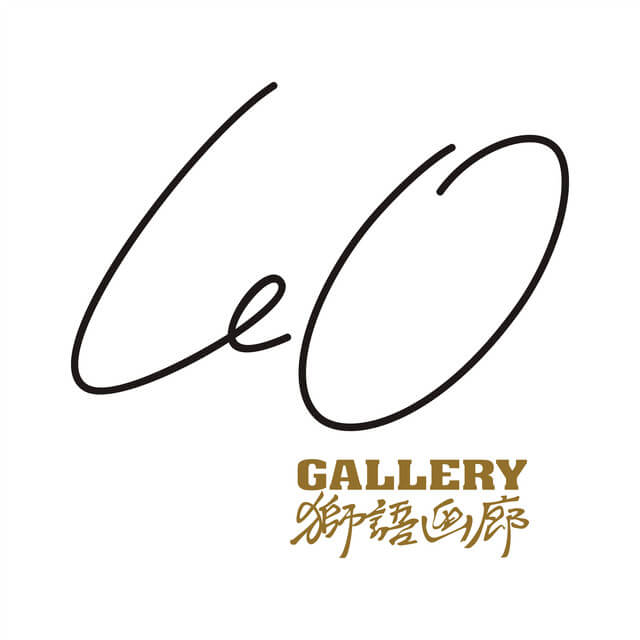XIAO BO’S CONTAINER
Text|Wang Che
Last year in Hangzhou, Xiao Bo and I chose to drift across West Lake for an art project, surrounded by mountains, waters, and the urban landscape. Why drifting? To articulate the relationship between ourselves and the landscape around us—in essence, the relationship between a person and the space (city, art world) they inhabit. One’s actions and thoughts are inevitably shaped by such a space. To find a way to express this dynamic, I came up with the gesture of drifting. This is much like Xiao Bo’s artistic approach. As an artist, in observing certain people, matters, cultures, and forms of art, he has devised a “four grids” method to express his relationship with others. This is merely a method, just like our choice to take a boat on the lake instead of driving or walking through Hangzhou. In adopting this method, Xiao Bo has developed a language or form of his own. Of course, his visual language is constantly evolving, but in recent years, it has taken shape through this four grids structure. For Xiao Bo, a container is essential—this format serves that function, enabling him to contain and channel his responses to the external world. Unlike artists who are acutely sensitive to a specific kind of feeling, Xiao Bo collects a variety of perceptions, reflects on them, and integrates them into his work. He merges diverse feelings and visual languages, sequencing them through the continuity of the four grids form.
Because there is a container—or more accurately, because he himself becomes a container—many things can be brought in to be examined, considered, felt, turned over in the mind. A greater degree of freedom emerges. Fixed modes of expression are broken, and new associations and forms are discovered. Yet these new outcomes are not entirely disconnected from pre-existing ones; on the contrary, they often serve as supplements or responses. Like a phrase, a mood, a brushstroke in painting, or Chinese characters with similar stroke structures—Xiao Bo’s works draw subtle connections among them. These links are not just “curious” (qímiào, 奇妙) in a superficial sense. What we label as “curious” often simply lies beyond familiar patterns of thought or methods. But are they truly curious? The term itself is quite interesting: “qí” (奇) refers to an unusual path or method, and “miào” (妙) to a result or effect. It is because of a peculiar mode of thinking that one arrives at a refined outcome. Those with such imaginative thought are not inherently magical—it’s rather that they possess a container of their own, like an alchemical furnace or an experimental site, where new and unexpected combinations can be tested. This, perhaps, is the essence of the world—not a world defined solely by discipline, instruction, or predetermined logic. Possessing one’s own container is no easy matter. It means one’s thoughts, knowledge, experience, and methods must attain a certain breadth. As the saying goes, “without a geographical view, there is no worldview.” A perspective on the world is gained through reading—both of texts and of the body. Xiao Bo, always smiling as he looks and listens, appears detached, as though concealing his own subjectivity. Yet in viewing his works, one realizes he is absorbing and harmonizing.
This series of works by Xiao Bo, when viewed simply in terms of their visual surface, resembles a kind of “methodological aesthetics.” One can observe the order of painting—a single motif repeated four times, nearly identical except for minor hand-rendered variations. Regardless of the thought, feeling, technique, or color involved, under this method the works exhibit a high degree of consistency. Visually, they subject the viewer to continual segmentation and repetition, evoking a monotonous, banal urban realm—one that has been transformed into a repetitive self-imitation. This compels us to pay attention to the banal, to feel a cultural vacuum, and to ironically praise mediocrity (that is, meaninglessness). This is not to suggest that Xiao Bo’s painting lacks visuality. In fact, he has already moved beyond conventional concerns of color, space, and depth. More precisely, he is posing questions—though not in the form of questions. He conducts experiments—though not with an experimental appearance. On reflection, artistic creation has never followed a linear progression. When we encounter a specific phase of an artist’s practice, understanding it is never easy. Fortunately, in the continuity of an artist’s work, certain core ideas remain largely unchanged. Xiao Bo’s earlier works depicted a single second using 24 painted frames. Now, in the four grids repetitions, the narrative has been stripped away, the emotion withdrawn. One painting after another stands silently; it is difficult to extract any information beyond the visual. To eliminate narrative and suppress emotion is a rare feat in the art world—precisely because it is so difficult. The challenge lies in our unconscious tendency toward narrative, our instinct to express attitudes or intense emotional and psychological states.
The absence of narrative does not mean that nothing can be narrated; the absence of emotion does not imply a lack of feeling. The “banality” I mentioned above—might it not be a kind of sensation? Perhaps it is a sensation that comes after all others have been exhausted, comparable to a form of spiritual practice. It may feel dull and tedious, but the thoughts it yields can offer insight into all aspects of the world. The same applies to “vacuum” and “mediocrity”—the former being truly empty, the latter being less than refined. These seemingly unflattering terms can in fact embody great wisdom. When I first saw Xiao Bo’s work, I had such a reaction: I couldn’t understand it. I didn’t know how to understand it. My usual ways of seeing no longer worked. Yet at the level of raw perception, these works emanated a powerful energy and warmth. One could say the formal aspect of Xiao Bo’s work is one part of it, but more importantly, it is the state of the image he creates that provokes deep reflection—challenging and enlightening our established modes of understanding.
ARTIST INTRODUCTION
XIAO BO born in Hangzhou in 1977, graduated from the Comprehensive Painting Department of China Academy of Art and currently works and lives in Hangzhou. Xiao Bo’s works present a state of hidden subjectivity, where the trace of the subject is revealed through his method settings. The subsequent process unfolds like an automatic program, driven by catalytic conditions such as material properties, aesthetic intuition, language rules, or bodily movements. Each parallel series adheres to similar generative structures yet leads to different visual results.
His solo exhibitions include: “Kai Ye Da Ji,” The Delta INST, Hangzhou (2025); “Pure and Kind Dinner Party,” Imagination Mechanics Lab, Hangzhou (2023); “22,” 1000 PRESS, Hangzhou (2022); “Problem Solving,” MUUM Art Space, Hangzhou (2022); “Two Methods,” Today Art Museum, Beijing (2018); “Xiao Bo,” World Gallery, Hong Kong (2018); “One Another,” 55 Gallery, Shanghai (2017); “Stay,” 55 Gallery, Shanghai (2015); “Fragments,” Platform China, Beijing (2008); “Frame,” Platform China, Beijing (2006); “Repetitive Repetition,” Doart, Beijing (2006).
CURATOR INTRODUCTION
Wang Che born in Handan in 1986, currently lives and works in Beijing as an independent curator. Since 2010, he has been engaged in art criticism writing and curatorial practice, focusing on mobility, thinking and developing projects across diverse landscapes. Guided by the concept of "curating through walking," he emphasizing the process and holistic perception.
Curated projects include “Kai Ye Da Ji” (Hangzhou, 2025), “A few steps Back: Restoring from the Result to the Cause” (Shenzhen, 2015–2016), “Walking along the Minjiang River” (Minjiang River Basin, Sichuan, 2016–2017), “Wildlands” (Inner Mongolia, 2016), “Desert Residency” (Kubuqi Desert, Inner Mongolia, 2017–2020), “Walking along the Yanshan Mountains” (Yanshan Mountains, 2018–2023), “Journey through Xinjiang” (Southern Xinjiang, 2019), “Black Gobi Project” (Heishan Gobi, Qinghai, 2020), “Lost in Encountering” (Fujian Province, 2020–present), “Game of Heaven and Earth: Walking on the Tibetan Plateau” (Tibetan Plateau, 2022–present), “The Growing River: Journey along the Nujiang River” (Nujiang River Basin, Yunnan, 2022), and “Solitude in Dushan” (Suichang County, Zhejiang, 2024–present). Additionally, he has also curated solo and group exhibitions for artists.




